Articles
- Page Path
- HOME > Restor Dent Endod > Volume 27(6); 2002 > Article
- Original Article Shear bond strength of repaired composite resin restorations
- Soo-young Choi, Sun-Wa Jeong*, Yun-Chan Hwang, Sun-Ho Kim, Chang Yun, Won-Mann Oh, In-Nam Hwang
-
2002;27(6):-576.
DOI: https://doi.org/10.5395/JKACD.2002.27.6.569
Published online: November 30, 2002
Department of Conservative Dentistry, College of Dentistry, DSRI, Chonnam National University, Korea.
*Department of Dentistry, College of Medicine, Seonam University, Korea.
Copyright © 2002 Korean Academy of Conservative Dentistry
- 798 Views
- 0 Download
- 2 Crossref
Tables & Figures
REFERENCES
Citations
Citations to this article as recorded by 

- Analysis of the 2-dimensional marginal fit of the occlusal surface and the 3-dimensional accuracy of the inner surface of the occlusal surface according to the inlay prosthesis structure made of composite resin
Kim Dong-Yeon, Lee Tae-Hee, Park Dong-In, Park Jin-Young, Jeong Il-Do, Lee Ha-Na, Kim Ji-Hwan, Kim Woong-Chul
Journal of Korean Acedemy of Dental Technology.2019; 41(1): 21. CrossRef - The study of fractural behavior of repaired composite
Sang-Soon Park, Wook Nam, Ah-Hyang Eom, Duck-Su Kim, Gi-Woon Choi, Kyoung-Kyu Choi
Journal of Korean Academy of Conservative Dentistry.2010; 35(6): 461. CrossRef
Shear bond strength of repaired composite resin restorations
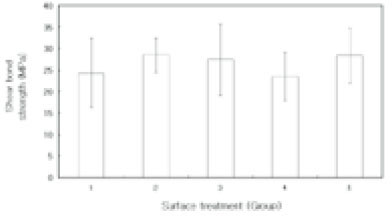
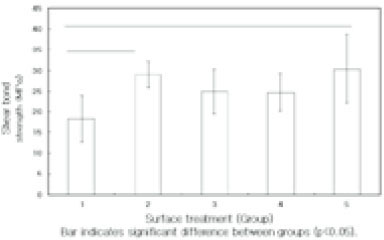
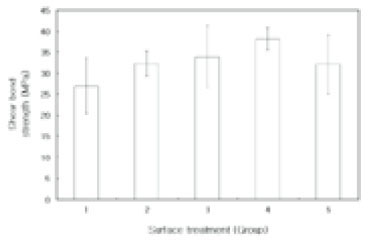
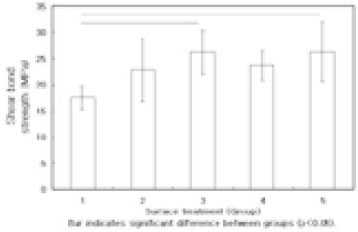
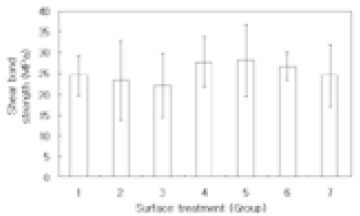
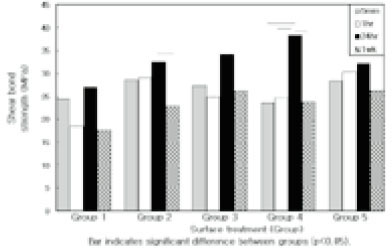
Fig. 1
The shear bond strength of Charism® specimens aged for 5 min.
Fig. 2
The shear bond strength of Charisma® specimens aged for 1 hr.
Fig. 3
The shear bond strength of Charisma® specimens aged for 24 hrs.
Fig. 4
The shear bond strength of Charisma® specimens aged for 1 wk.
Fig. 5
The shear bond strength of Artglass® specimens.
Fig. 6
Comparison of the shear bond strength of Charisma® specimens.
Fig. 1
Fig. 2
Fig. 3
Fig. 4
Fig. 5
Fig. 6
Shear bond strength of repaired composite resin restorations
The shear bond strength (MPa) of composite resin. (mean±S.D., n=5)
Failure mode of Charisma® specimens.
Failure mode of Artglass® specimens.
Table 1
The shear bond strength (MPa) of composite resin. (mean±S.D., n=5)
Table 2-1
Failure mode of Charisma® specimens.
Table 2-2
Failure mode of Artglass® specimens.

 KACD
KACD







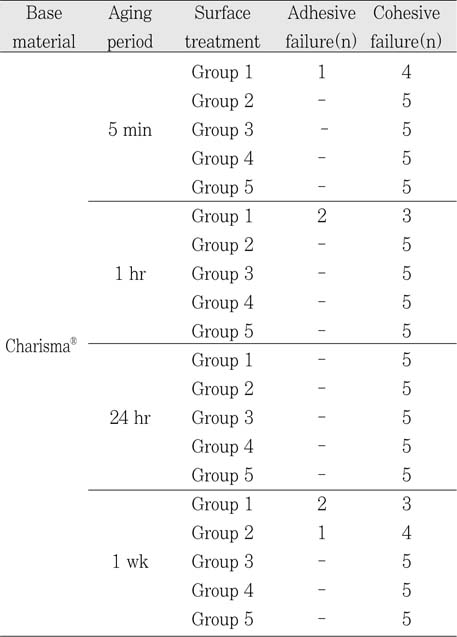
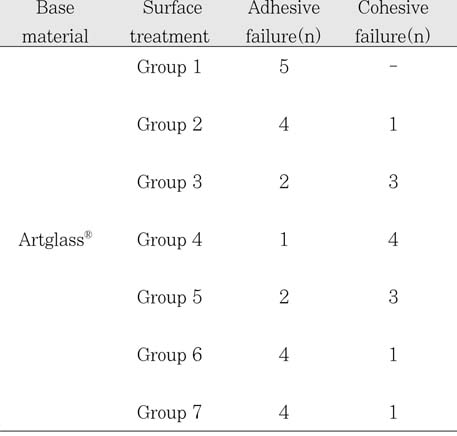
 ePub Link
ePub Link Cite
Cite

